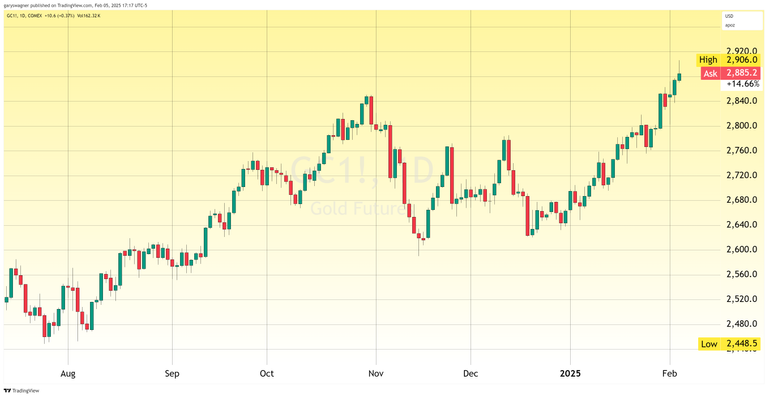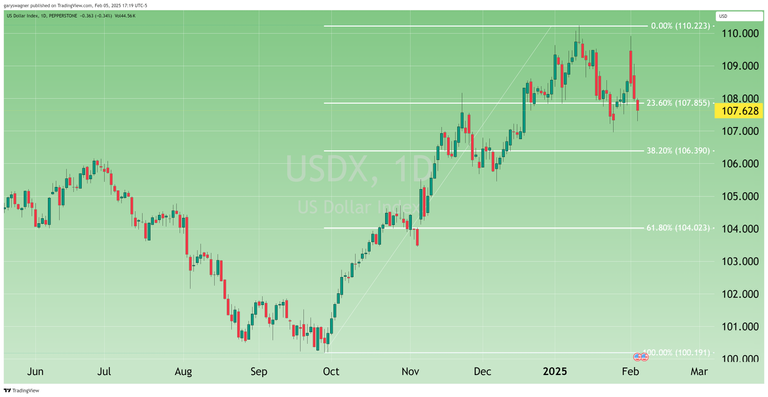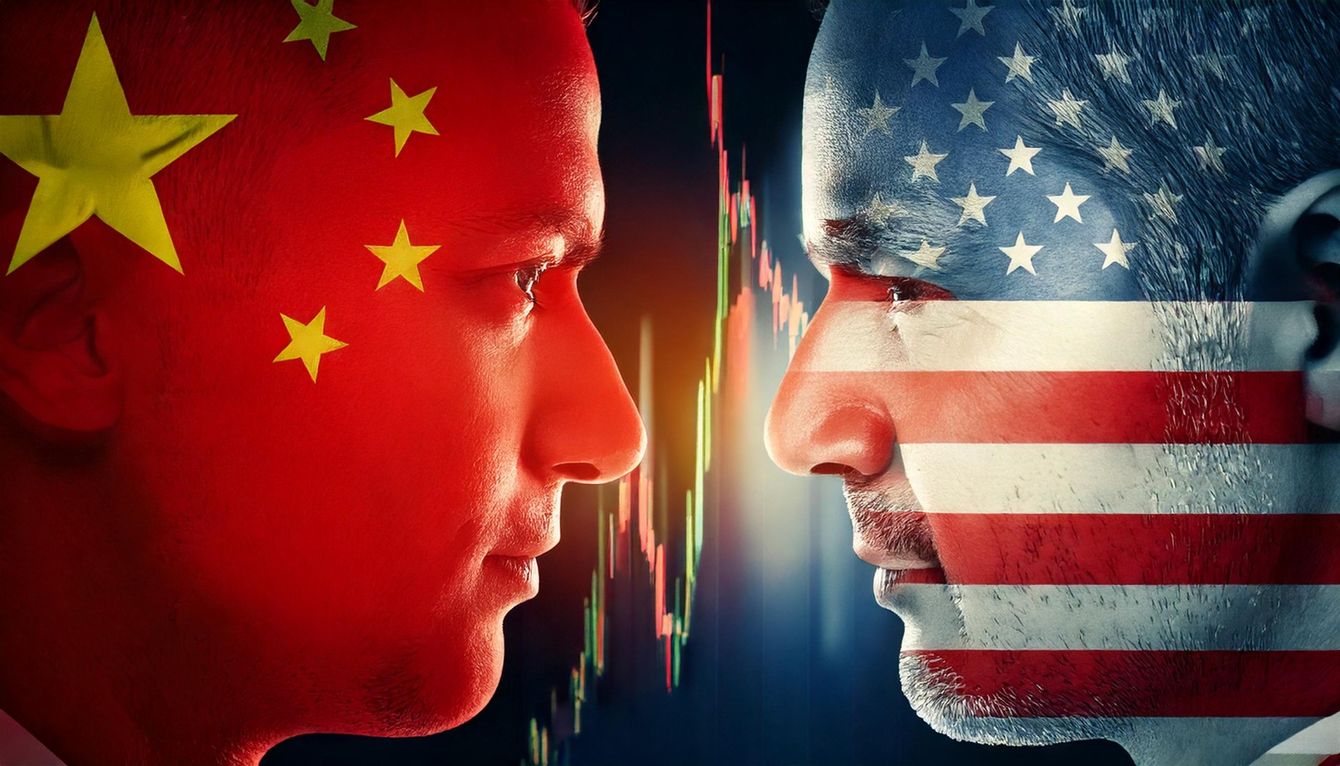Gold prices reached unprecedented heights today as the April futures contract breached $2,900 per troy ounce for the first time in history, marking the third consecutive trading session of record-breaking prices. While the precious metal briefly touched levels above $2,900, it settled at $2,883.50 by 4:40 PM EST, posting a modest gain of $7.70 or 0.27%.

The surge in gold prices coincides with mounting concerns over international trade relations following President Trump's recent tariff announcements. The rally has been fueled by a combination of bullish market sentiment and a weakening U.S. dollar, with the dollar index falling 1.77% since Monday to reach 107.47, representing a decline of 0.34% in today's trading session alone.

The latest market turbulence stems from President Trump's February 1 announcement of substantial tariffs on key trading partners. The initial plan outlined a 25% tariff on all non-energy imports from Mexico and Canada (with energy resources subject to a 10% tariff) and a blanket 10% tariff on Chinese imports. While the implementation of tariffs on Mexican and Canadian goods has been temporarily suspended for 30 days pending further negotiations, the administration has maintained a firm stance on Chinese imports, proceeding with the announced tariffs as planned.
Beijing's response was swift and decisive. On Tuesday, Chinese finance officials announced retaliatory measures including a 15% tariff on U.S. coal and liquefied natural gas imports, set to take effect February 10. Additional measures include a 10% duty increase on American crude oil, selected automotive products, and agricultural equipment, along with new export controls on critical minerals.
The escalating tensions between the world's two largest economies have prompted investors to seek refuge in safe-haven assets, particularly gold. The dollar index, which measures the U.S. currency against a basket of six major currencies (with the euro comprising 57.6% of the weighting), has retreated as market participants reassess their portfolio allocations in light of the growing trade tensions.
The implementation of reciprocal tariffs by both China and the United States marks a significant escalation in trade tensions, raising concerns about the potential impact on global economic stability. As these two economic superpowers engage in what appears to be the opening stages of a trade war, market participants remain watchful of further developments that could impact international trade flows and economic growth prospects.
For those who want more information on our premium service, please click the link Premium Service
Wishing you, as always good trading,

